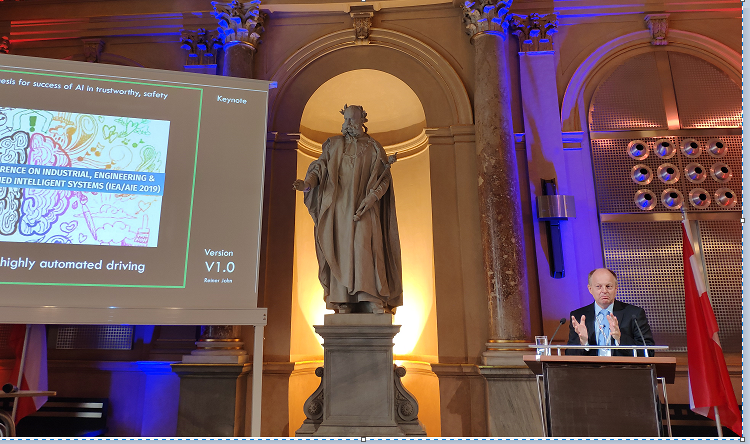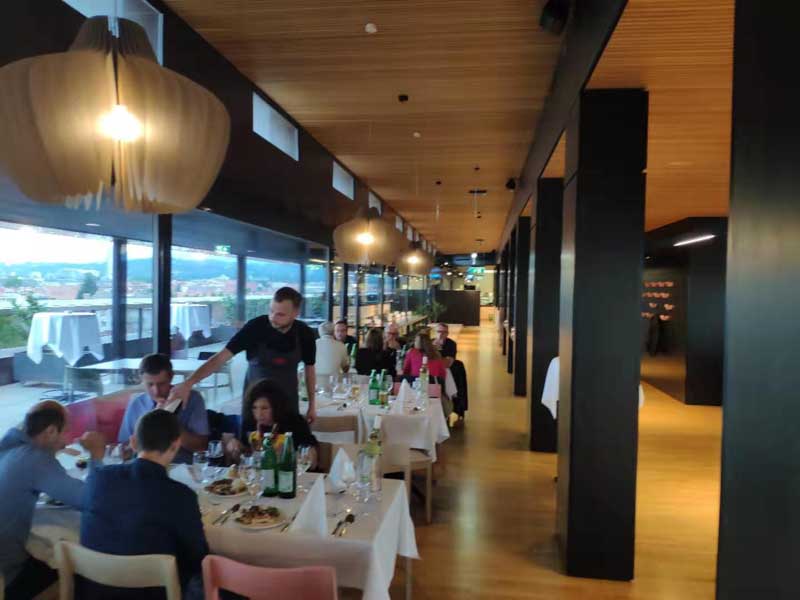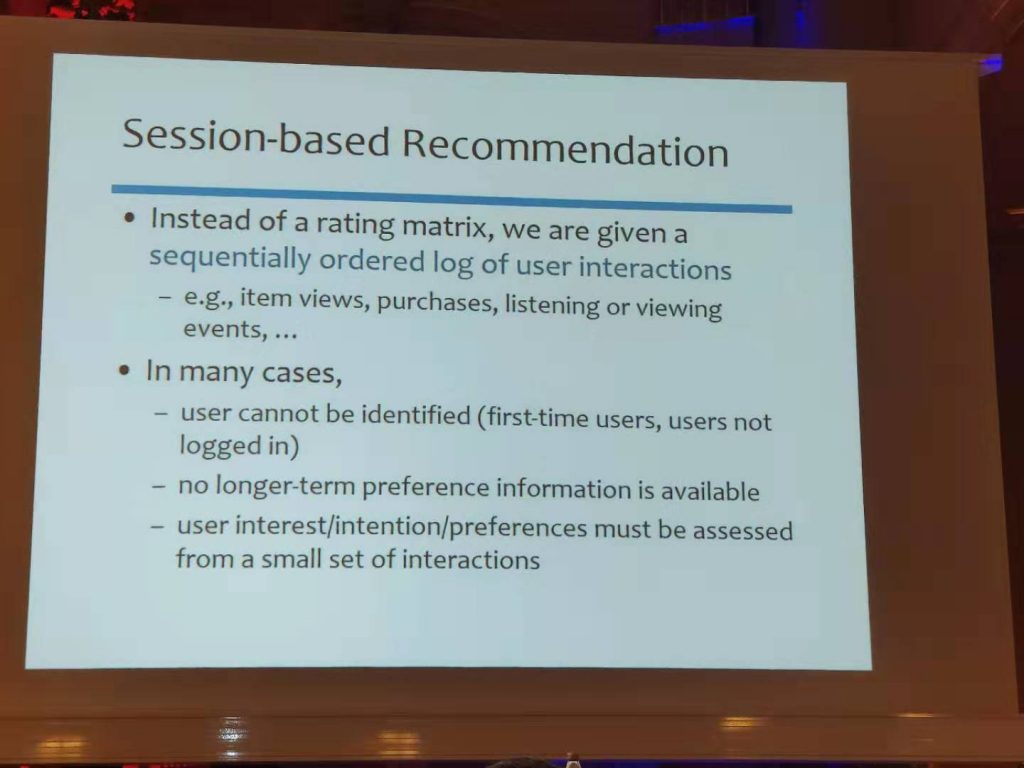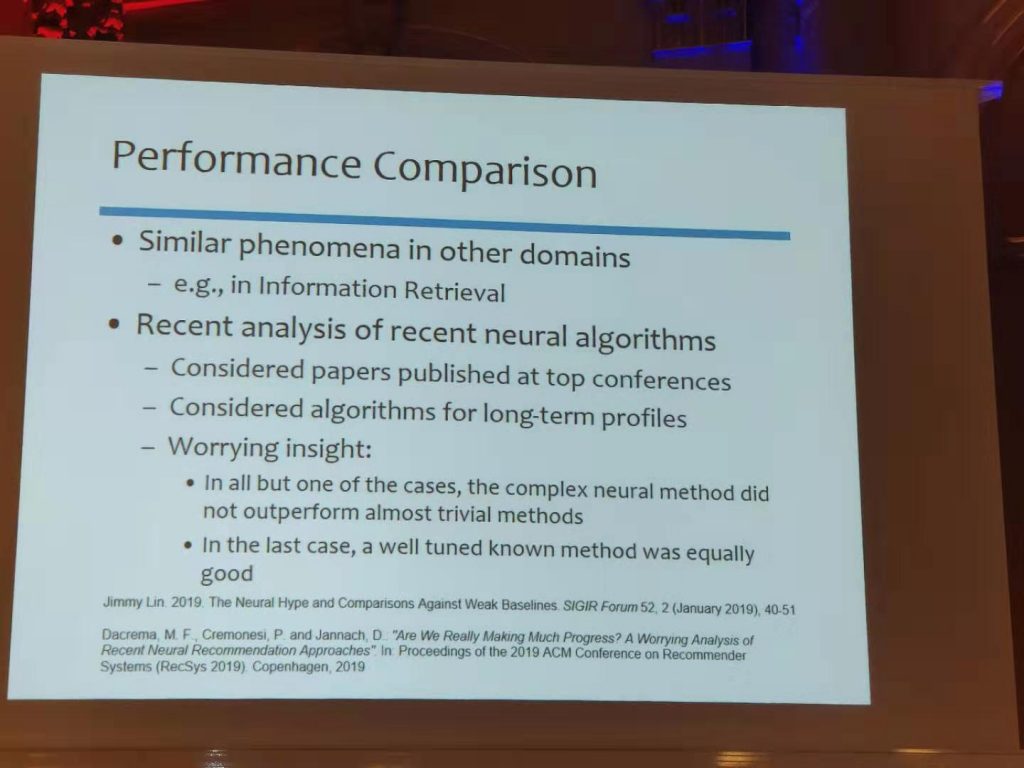I have just arrived Austria to attend the IEA AIE 2019 conference ( 32nd Intern. Conf. on Industrial, Engineering and Other Applications of Applied Intelligent Systems), which is held in Graz from the 9th to 11th July. In this blog post, I will give a report about the conference.

About the IEA AIE conference
It is a conference on artificial intelligence and applications that has been held for more than 30 years. I have attended this conference several times. You can read my reports about IEA AIE 2018 (Canada) and IEA AIE 2016 (Japan). And I also had papers at IEA AIE 2009, IEA AIE 2010, IEA AIE 2011 and IEA AIE 2014.
This year, 151 papers were submitted. From that 41 were selected as full papers, and 32 as short papers.
Location
The IEA AIE 2019 conference was held in the city of Graz in Austria, and more precisely at the Graz University of Technology.

The Graz University of Technology:

Opening cemenony
The organizers first introduced the program of this year’s conference. Below is a picture of the general chair Prof. M. Ali. giving a few words, and then below a slide about statistics.


Keynote by Reiner John, titled “The 2nd wave of AI – Thesis for success of AI in thrustworthy, safety critical mobility systems”

The talk was about highly automated driving. It talked about challenges for highly automated riving (HAD), an architecture for HAD, the opportunities for AI in components and subsystems and how AI can participate in the system at an application level.
Some of the challenges are how to drive in extreme weather conditions. Humans often rely on experience, precaution, adaptation, training and foreseen scenarios, to handle difficult situations.

A car is a very complex system and AI can be used to control that complexity. Also safety is very important, as well as predictive maintenance. AI can be used to enhance safety, efficiency and functionality. Here is a pictures of some requirements for automated cars:

Another important aspects is connectivity between cars to collaboratively manage traffic. There was then, a lot more details but here I just report some main ideas.
Welcome reception
On the first evening, there was a nice welcome reception on the top of a building that belongs to the university. A dinner was served. Here are a few pictures:


Paper presentation
I am also excited to present a paper at this conference proposing a new model to discover stable periodic patterns in a sequence of transactions (transaction database). This paper, which was written by my student, received a best paper award. The solution based on the cummulative sum is quite innovative and could be extended other pattern mining problems. I will also release the source code soon in my SPMF software. You can read the paper here:
Fournier-Viger, P., Yang, P., Lin, J. C.-W., Kiran, U. (2019). Discovering Stable Periodic-Frequent Patterns in Transactional Data. Proc. 32nd Intern. Conf. on Industrial, Engineering and Other Applications of Applied Intelligent Systems (IEA AIE 2019), Springer LNAI, 14 pages (to appear)


Banquet
On the evening of the second day, there was a banquet on the top of a hill with a good view of the city. The awards were announced.
Keynote by Dietmar Jannach
Prof. Jannach gave a talk about recommender systems. Recommender systems have numerous applications in our daily lives. They help to filter information and find relevant information. Research in tha field started as far as the 1970s with “Selective Dissemination of Information” and then “Collaborative filtering” and “content-based” approaches in the 1990s.

A common abstraction of the recommendation problem is to see it as a matrix completion task, where the goal is to learn a function to recommend that can be assessed using measures such as accuracy.


The above problem has been well-studied The topic of this talk is session-based recommendation where instead of a rating matrix, we have a sequentially ordered log of user interactions (item views, purchases, etc.). And in many cases, we don’t have a user id or long term preference information, etc. We also don’t know the user intent but want to predict the next user action(s) given his last actions (in the current session) and other types of information (community behavior etc.




How to solve these problems? Some method are to use association rules, markov chains, sequential rules, sequential patterns, neural networks, session-based nearest neighbors, etc.

A problem to evaluate session-based recommender system is that there is no standard benchmark protocols and datasets.
The speaker also mentioned that neural networks often do not perform much better than simple approaches.

There was then more details, but I will not report all in this blog post.
Next year: IEA AIE 2020
It was announced that IEA AIE 2020 will be held in Kitakyushu, Japan from 21st to 24th July. I am one of the Program Chair of IEA AIE 2020, and I am looking forward to it. Then, IEA AIE 2021 will be in Malaysia, and then IEA AIE 2022 in Japan.
Conclusion
The IEA AIE 2019 conference was good on overall. The organization was well done, and the location was interesting. I had a chance to meet several researchers that I knew beforehand and also meet some interesting researchers. Looking forward to next year!





Pingback: A brief report about the IEA AIE 2020 conference | The Data Mining Blog
Pingback: Brief report about the IEA AIE 2021 conference | The Data Mining Blog
Pingback: Brief report about the IEA AIE 2022 conference | The Data Mining Blog